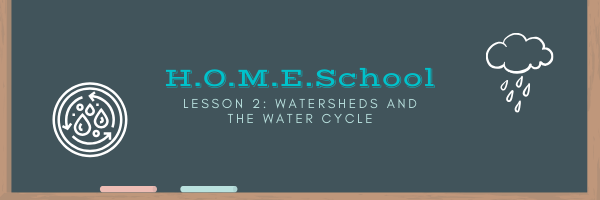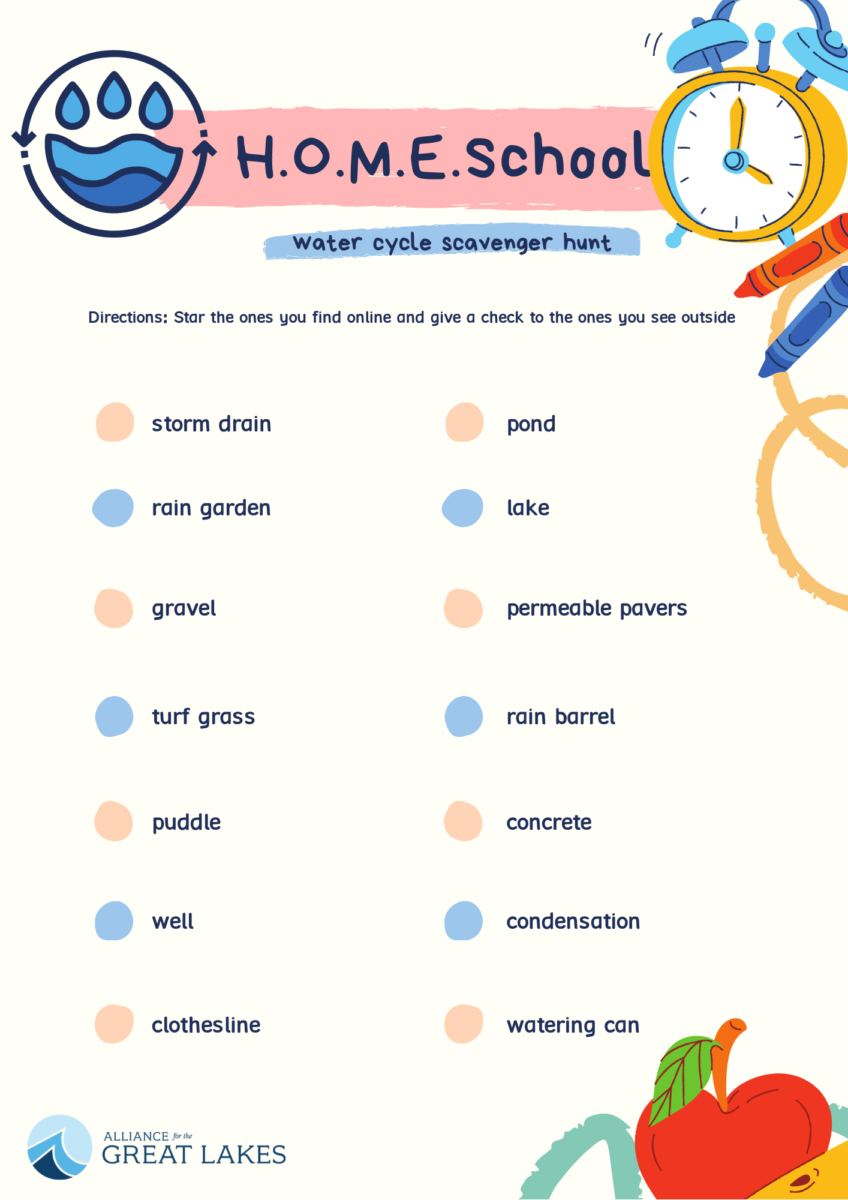
Water, water everywhere, but where does it go? This week, students will look at a Great Lakes watershed map and watch a simple experiment about the water cycle. Then they’ll look for examples of the water cycle in the real world. They’ll discover that watersheds and the water cycle are all around them!
Time/Materials
This activity will take between 30 minutes and an hour.
You’ll need:
- Computer
- Optional: printer and writing utensil
Ready? Head to the Classroom!
Watch the video below to learn about watersheds and the water cycle.
Share the Learning
Ask your child what they noticed. Did they notice how the surfaces were different from each other? What happened when water precipitated on these surfaces? Did it always do the same thing? Why do they think water sometimes makes a puddle and sometimes flows off the surface? Where does the water flow to?
Activity
Search online or out your window for examples of the water cycle in the real world.

Extra Credit
Parents: Post a picture of your H.O.M.E.School water cycle scavenger hunt – or a photo of an item on the list – on social media! And if you tag the Alliance for the Great Lakes, we might share it, too.
Deep Dive
Want to learn more? Check out these resources!
- Learn the steps of the water cycle
- View this Water Cycle Sing-a-Long, and then record your own water cycle song!
- Complete this Water Cycle Word Puzzle from our Great Lakes in My World K-8 curriculum.
- Play around on the U.S. Geological Survey’s (USGS) Interactive Water Cycle Diagram. It has 3 levels: beginners, intermediate, and advanced.
- Look at this map or a local map to see what bodies of water are near you. Talk about how the surfaces in your neighborhood are connected to your waterways.
- Make a model of a watershed with the Watershed Orientation lesson plan from our Great Lakes in My World K-8 curriculum. Kids orient themselves to the Great Lakes using maps and learn about watersheds, including point and nonpoint source pollution, by building a model (Grade 4 & Up).
- Practice Mapping Infiltration with this activity from LakeDance’s Pipes & Precipitation Program. Students study the surfaces around their home or school to determine the difference between permeable and impermeable surfaces, and make predictions for where land will flood.
Find more Great Lakes lessons at H.O.M.E.School.
